How to fix electrical system issues in my HERO Motorcycle?
- AAlex RobinsonAug 3, 2025
For HERO Motorcycle electrical system issues, replace the fuse and secure the connections.
How to fix electrical system issues in my HERO Motorcycle?
For HERO Motorcycle electrical system issues, replace the fuse and secure the connections.
What to do if my HERO MAESTRO EDGE PROGRAMMED FI Motorcycle engine starts but stalls?
If your HERO Motorcycle engine starts but then stalls, it could be due to a leakage or air lock in the fuel lines. Inspect the fuel lines. Another potential cause is a dirty or clogged pre-foam element, so check that as well.
Welcomes the owner, highlights vehicle's environmental commitment, and BS-VI norms.
Explains how to locate and interpret the vehicle's unique VIN and Engine Number.
Details physical characteristics, weight, fluid capacities, engine performance, and chassis.
Covers tyre sizes, braking systems, transmission type, and electrical components.
Essential guidelines for safe operation, rider protection, and defensive riding.
Advises against drinking and riding, and emphasizes vehicle condition for safety.
Highlights the importance of helmets and eye protection for rider safety.
Recommends sturdy boots, gloves, and suitable clothing for riding.
Explains vehicle design for passengers/cargo and specific weight limits.
Provides guidelines for balancing cargo, preventing instability, and secure placement.
Recommends genuine parts and warns against non-genuine ones for safety.
Advises against modifications that could affect vehicle safety and performance.
Lists recommended actions and actions to avoid for safe riding.
Advises on engine health, servicing, fuel, and pollution control for a healthy environment.
Identifies and labels parts and controls visible from the top of the vehicle.
Identifies and labels parts visible from the left side of the vehicle.
Identifies and labels parts visible from the right side of the vehicle.
Explains the function of various indicators on the speedometer panel.
Details the function of reset button, FI malfunction lamp, and turn signal indicators.
Explains the operation and display of the odometer, tripmeter, and fuel gauge.
Details the function and behavior of the service reminder indicator on the LCD.
Describes the integrated braking system, its components, and operation.
Guides on checking and replacing brake pads for safety and performance.
Instructions for opening, closing, and refueling the fuel tank, including capacity.
Guidelines on using petrol with alcohol and potential issues or recommendations.
Importance of proper tyre inflation and regular inspection for safety and handling.
Guidance on checking tread wear indicators and when to replace tyres.
Advice on repairing punctures and handling repaired tyres.
Information on tyre specifications and replacement recommendations.
Details the different key positions (ON, OFF, LOCK, SEAT OPEN, FUEL OPEN) and their functions.
Explains the functions of dimmer, turn signal, and horn switches on the left handlebar.
Covers the electric starter switch, steering lock mechanism, and caution for its use.
Operation of fuel lid lock, seat lock, helmet holders, and center compartment.
Details boot lamp, USB charger functionality, and luggage hook usage and limits.
Information on the side stand indicator and the side stand switch functionality.
Instructions on how to operate the pillion footrests.
Step-by-step procedures for removing the center compartment and outer body panels.
Guides for removing the front cover, floor side covers, and related components.
Steps for removing rear view mirrors and the headlamp assembly.
Procedure for adjusting the headlamp beam vertically for proper focus.
Comprehensive checklist of checks for vehicle condition before starting a ride.
Recommendations for preventing vehicle theft and securing it when parked.
Step-by-step guide for starting the fuel-injected engine safely and correctly.
Warnings regarding battery, side stand kill feature, and exhaust fumes during startup.
Guidance on proper riding during the initial 500 km for vehicle reliability and performance.
Instructions on acceleration, deceleration, cornering, and descending gradients for safe riding.
Instructions for using the main stand and information on the tool kit contents.
Guidelines for washing and polishing the vehicle to protect finishes and maintain appearance.
Advice on cleaning the vehicle to prevent rust from road salt and proper washing techniques.
Explains why regular maintenance is crucial for safety, economy, and vehicle longevity.
Key safety measures and warnings to follow before and during maintenance.
Detailed schedule of inspections, cleaning, adjustments, and replacements required for vehicle upkeep.
Steps for removing, inspecting, cleaning, and replacing the air cleaner element.
Instructions for checking throttle cable condition and adjusting its free play for smooth operation.
Procedure for checking engine oil level and when and how to add oil.
Steps for changing engine oil and cleaning the oil strainer screen for engine health.
Steps for replacing final drive oil, including capacity and necessary precautions.
Instructions for removing, inspecting, cleaning, and installing spark plugs.
Explains how to check rear brake shoe wear using the reference mark and arrow.
Details battery type, maintenance-free features, disposal, and storage recommendations.
Procedures for safely removing, installing, and charging the vehicle battery.
Details fuse box location, fuse ratings, and procedures for replacing blown fuses.
How to inspect front and rear suspension for proper function and oil leakage.
Steps for removing and replacing the headlamp bulb, including safety precautions.
Procedures for replacing front turn signal, rear turn signal, and tail/stop lamp bulbs.
Explains the role of the catalytic converter in emissions control and how to protect it.
Describes the system preventing fuel vapor release and its components for emission standards.
Steps for preparing the vehicle for extended storage to prevent deterioration and rust.
Procedures for bringing the vehicle out of storage and performing initial checks.
Identifies common causes and solutions for the engine not starting.
Troubleshooting for engine stalling, poor acceleration, and related system checks.
Solutions for problems related to horn sound, lights, and electrical connections.
Explains mandatory traffic signs and their importance for road safety and compliance.
Describes cautionary signs for road conditions and informatory signs for directions.
Outlines what Hero MotoCorp warrants for the vehicle, its duration, and conditions.
Lists the specific terms, limitations, and agreements for vehicle warranty coverage.
Details the warranty period and conditions specific to the vehicle's battery.
Defines the coverage, duration, and conditions for emission-related warranty.
Highlights advantages like longevity, economy, safety, and quality from using genuine parts.
Lists potential damages, performance issues, and safety risks from using non-genuine parts.
Contact information for Hero MotoCorp offices in the Central Zone.
Contact information for Hero MotoCorp offices in the East Zone.
Contact information for Hero MotoCorp offices in the North Zone.
Contact information for Hero MotoCorp offices in the South Zone.
Contact information for Hero MotoCorp offices in the West Zone.
Welcomes the owner, highlights vehicle's environmental commitment, and BS-VI norms.
Explains how to locate and interpret the vehicle's unique VIN and Engine Number.
Details physical characteristics, weight, fluid capacities, engine performance, and chassis.
Covers tyre sizes, braking systems, transmission type, and electrical components.
Essential guidelines for safe operation, rider protection, and defensive riding.
Advises against drinking and riding, and emphasizes vehicle condition for safety.
Highlights the importance of helmets and eye protection for rider safety.
Recommends sturdy boots, gloves, and suitable clothing for riding.
Explains vehicle design for passengers/cargo and specific weight limits.
Provides guidelines for balancing cargo, preventing instability, and secure placement.
Recommends genuine parts and warns against non-genuine ones for safety.
Advises against modifications that could affect vehicle safety and performance.
Lists recommended actions and actions to avoid for safe riding.
Advises on engine health, servicing, fuel, and pollution control for a healthy environment.
Identifies and labels parts and controls visible from the top of the vehicle.
Identifies and labels parts visible from the left side of the vehicle.
Identifies and labels parts visible from the right side of the vehicle.
Explains the function of various indicators on the speedometer panel.
Details the function of reset button, FI malfunction lamp, and turn signal indicators.
Explains the operation and display of the odometer, tripmeter, and fuel gauge.
Details the function and behavior of the service reminder indicator on the LCD.
Describes the integrated braking system, its components, and operation.
Guides on checking and replacing brake pads for safety and performance.
Instructions for opening, closing, and refueling the fuel tank, including capacity.
Guidelines on using petrol with alcohol and potential issues or recommendations.
Importance of proper tyre inflation and regular inspection for safety and handling.
Guidance on checking tread wear indicators and when to replace tyres.
Advice on repairing punctures and handling repaired tyres.
Information on tyre specifications and replacement recommendations.
Details the different key positions (ON, OFF, LOCK, SEAT OPEN, FUEL OPEN) and their functions.
Explains the functions of dimmer, turn signal, and horn switches on the left handlebar.
Covers the electric starter switch, steering lock mechanism, and caution for its use.
Operation of fuel lid lock, seat lock, helmet holders, and center compartment.
Details boot lamp, USB charger functionality, and luggage hook usage and limits.
Information on the side stand indicator and the side stand switch functionality.
Instructions on how to operate the pillion footrests.
Step-by-step procedures for removing the center compartment and outer body panels.
Guides for removing the front cover, floor side covers, and related components.
Steps for removing rear view mirrors and the headlamp assembly.
Procedure for adjusting the headlamp beam vertically for proper focus.
Comprehensive checklist of checks for vehicle condition before starting a ride.
Recommendations for preventing vehicle theft and securing it when parked.
Step-by-step guide for starting the fuel-injected engine safely and correctly.
Warnings regarding battery, side stand kill feature, and exhaust fumes during startup.
Guidance on proper riding during the initial 500 km for vehicle reliability and performance.
Instructions on acceleration, deceleration, cornering, and descending gradients for safe riding.
Instructions for using the main stand and information on the tool kit contents.
Guidelines for washing and polishing the vehicle to protect finishes and maintain appearance.
Advice on cleaning the vehicle to prevent rust from road salt and proper washing techniques.
Explains why regular maintenance is crucial for safety, economy, and vehicle longevity.
Key safety measures and warnings to follow before and during maintenance.
Detailed schedule of inspections, cleaning, adjustments, and replacements required for vehicle upkeep.
Steps for removing, inspecting, cleaning, and replacing the air cleaner element.
Instructions for checking throttle cable condition and adjusting its free play for smooth operation.
Procedure for checking engine oil level and when and how to add oil.
Steps for changing engine oil and cleaning the oil strainer screen for engine health.
Steps for replacing final drive oil, including capacity and necessary precautions.
Instructions for removing, inspecting, cleaning, and installing spark plugs.
Explains how to check rear brake shoe wear using the reference mark and arrow.
Details battery type, maintenance-free features, disposal, and storage recommendations.
Procedures for safely removing, installing, and charging the vehicle battery.
Details fuse box location, fuse ratings, and procedures for replacing blown fuses.
How to inspect front and rear suspension for proper function and oil leakage.
Steps for removing and replacing the headlamp bulb, including safety precautions.
Procedures for replacing front turn signal, rear turn signal, and tail/stop lamp bulbs.
Explains the role of the catalytic converter in emissions control and how to protect it.
Describes the system preventing fuel vapor release and its components for emission standards.
Steps for preparing the vehicle for extended storage to prevent deterioration and rust.
Procedures for bringing the vehicle out of storage and performing initial checks.
Identifies common causes and solutions for the engine not starting.
Troubleshooting for engine stalling, poor acceleration, and related system checks.
Solutions for problems related to horn sound, lights, and electrical connections.
Explains mandatory traffic signs and their importance for road safety and compliance.
Describes cautionary signs for road conditions and informatory signs for directions.
Outlines what Hero MotoCorp warrants for the vehicle, its duration, and conditions.
Lists the specific terms, limitations, and agreements for vehicle warranty coverage.
Details the warranty period and conditions specific to the vehicle's battery.
Defines the coverage, duration, and conditions for emission-related warranty.
Highlights advantages like longevity, economy, safety, and quality from using genuine parts.
Lists potential damages, performance issues, and safety risks from using non-genuine parts.
Contact information for Hero MotoCorp offices in the Central Zone.
Contact information for Hero MotoCorp offices in the East Zone.
Contact information for Hero MotoCorp offices in the North Zone.
Contact information for Hero MotoCorp offices in the South Zone.
Contact information for Hero MotoCorp offices in the West Zone.
| Displacement | 110.9 cc |
|---|---|
| Fuel System | Programmed Fuel Injection |
| Front Suspension | Telescopic Hydraulic Shock Absorbers |
| Rear Suspension | Unit Swing with Spring Loaded Hydraulic Damper |
| Fuel Tank Capacity | 5 liters |
| Overall Length | 1843 mm |
| Overall Width | 715 mm |
| Wheelbase | 1261 mm |
| Ground Clearance | 155 mm |
| Kerb Weight | 112 kg |
| Engine Type | Air-cooled, 4-stroke |
| Starting System | Electric Start |
| Front Brake | Disc Brake |
| Rear Brake | Drum |
| Ignition | CDI |
| Starting Method | Electric Start |
| Frame Type | Underbone Type |
| Front Tyre | 90/90-12 54J |
| Rear Tyre | 90/100-10 53J |
| Reserve Fuel Capacity | 1 liter |
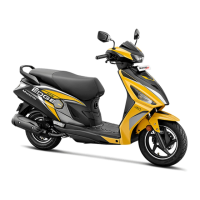
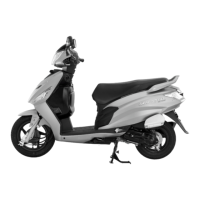
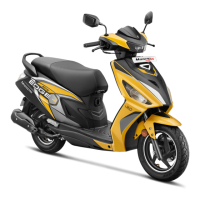

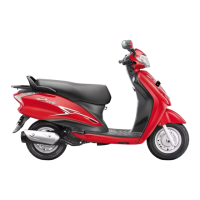
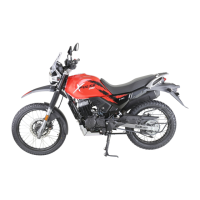
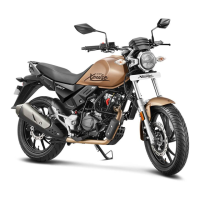
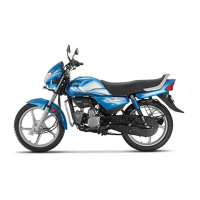
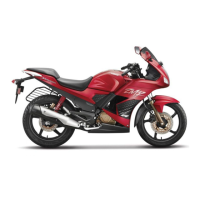

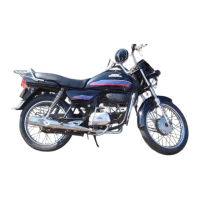
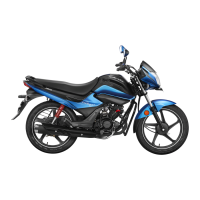
